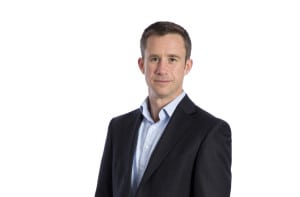Arqiva Exec: Rapid Technology Changes Shaping Satellite Capacity Needs
[Via Satellite 06-09-2015] Arqiva, a leading U.K. based communications infrastructure and media services company, expects to see a near-term rise in its domestic satellite capacity needs, but sees compression technology and the increased build-out of fiber slackening demand for satellite elsewhere. David Crawford, managing director of satellite and media at Arqiva, told Via Satellite that fast-paced trends in technology are facilitating significant changes across the industry and at the company.
“In the U.K. we have over the last 12 months increased our transponder capacity by just under 10 percent and, over the next two to three years, we think there will be a further increase in satellite capacity demand in the market as we get more growth in HD,” he said. “However, there is a wave of new compression standards and technologies that are coming into the market which clearly will add to available capacity.”
Improved compression technology is enabling broadcast companies to maximize their use of satellite bandwidth without seriously increasing their costs. Crawford said Arqiva is seeing the adoption of new compression technologies on the rise, which in turn is softening demand for satellite capacity particularly across Europe. And while better compression technology can free up capacity for improved services, how readily this translates into higher quality broadcasts is not immediately known.
“The question is: to what degree will adoption of HD and Ultra-HD channels pick up the spare capacity that’s been created by new compression technologies and standards? That has not played out yet,” he said.
In addition to compression, fiber is becoming a more aggressive competitor in many regions. For Europe in particular, Crawford said some major satellite platforms have a notable amount of excess capacity that in a soft market is increasingly succumbing to fiber. These market dynamics — compression technology and the growth of fiber adding to a surplus of satellite capacity — could lead low-cost channels toward more Over-The-Top (OTT) models while Direct-to-Home (DTH) becomes more HD-focused, he said.
“I think if the market pricing stays like it is today, then HD in Europe is actually pretty mature. What will likely happen is the next wave of compression standards technologies will create excess capacity which will lower the market price per megabit, which will in turn enable content owners to move to HD on an economical basis,” he explained.
Crawford noted this might not have the same effect on Ultra-HD. Much of the cost, he said, is attributed to production systems instead of transponder pricing. Plus consumer appetite is still being gauged, namely whether the impetus for Ultra-HD is viewer-driven or industry driven.
“We expect in the next five years Ultra-HD to be in the market but relatively modest. Over satellite we think it will be sports only, but over the Internet there will be quite a lot of 4K delivered. That would be the first three years, and then the three to five or six year view will depend on that pricing dynamic in the market,” he said.
Arqiva owns a fiber backbone in the U.K., and has a network of Points of Presence (PoPs) around the world. The company also purchases subsea cable from two providers. Crawford said Arqiva expands its international footprint of PoPs year on year, and when it comes to fiber service level matters more than anything else.
“It’s purely down to the economics,” he said. “End points, whether broadcast to head-ends, studios are increasingly fiber-fed so there is an option. Then we find if it is point-to-point or point to three or four different points, the economics of fiber now are getting more attractive and you are able to shift very large bandwidth at a very high level of service with attractive economics.”
Excluding the U.K., Arqiva plans to reduce the amount of satellite capacity it commits to, moving instead to use a pay-as-you-go model over fixed, 10-year contracts. In Asia, Crawford said the company has a mixed model comprised of some committed transponders and some pay-as-you go arrangements. Based on the growth in that market, he said Arqiva is comfortable with this setup for now, but will likely shift more toward the pay-as-you-go model over time.
While technology shifts are prompting much of this change, Crawford said Arqiva is spending an increasing amount of time bulking up service provisions and relationship management in working with customers. This includes spending more time in discussions directly with end-consumers and researching emerging viewing patterns such as those of Millennials. This research feeds into the solutions Arqiva offers, whether fiber or satellite, to broadcasters and partners, and ultimately guides new developments.
“Our view is really clear: at this time of industry dynamism and change, it is absolutely imperative that service and being close to your customers is the priority … of course the technology side is the enabler and the thing that’s changing, but if as a service provider you don’t understand your customer’s businesses inside-out, and if you don’t have the relationship where you can work with the customers on the changing environment, and if you don’t have the level of service that customers will trust you with new services, then it becomes an interesting conversation but you can’t capitalize on it,” he said.
